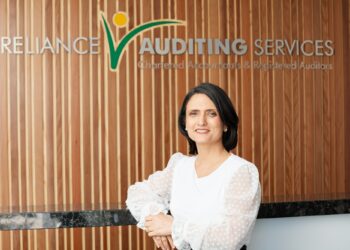Real property investments within SMSFs have been increasing, driven by the boom in the Australian property market in recent years.
In addition, the potential for high returns within a short time frame has resulted in some SMSF trustees going even further by carrying out a property development within their SMSF.
While it may seem like a good way to boost an SMSF’s assets, property development does not sit easily within the compliance framework of an SMSF. It can create headaches for the SMSF trustee, auditor and regulator – the ATO.
In fact the ATO has issued a warning that SMSFs that engage in certain property development activities may breach a number of rules, including the Superannuation Industry (Supervision) Act 1993 and the Superannuation Industry (Supervision) Regulations 1994 (SIS), as well as the non-arm’s length income provisions of the Income Tax Assessment Act 1997 (Tax Act) and Part IVA of the Tax Act 1936.
Any SMSF trustees who are considering developing a property within their SMSF need to carefully consider the following:
Running a business
To develop a property, the SMSF needs to operate a business. While none of the relevant authorities specifically prohibit an SMSF from this, there are rules to follow, including whether the business activity breaches SIS or causes an unfavourable tax treatment under the tax acts.
The ATO states that the business must be:
- Allowed under the trust deed; and
- Operated for the sole purpose of providing retirement benefits for fund members.
Types of property development activities
The key issue is whether property development activities breach the provisions of SIS or the tax acts.
Considerations include:
- Does the SMSF own the property being developed? If so, is the SMSF the sole
- owner or a joint owner with other development partners?
- Is the property development carried on in another structure? If so, how much
- equity interest does the SMSF have in this structure?
- Has the property been acquired from a related party of an SMSF?
- Is there more than one SMSF involved?
- Is there a connection between the parties to the development?
- Who has carried out the development works?
- How is the property purchase and development works funded?
- Is there a borrowing involved?
- Is the completed development to be retained or sold by the parties after the development is completed?
SIS requirements
The activities required to undertake the property development may breach SIS requirements, including:
- The sole purpose test
Section 62 of the SIS Act states that super funds must be maintained for the sole purpose of providing retirement benefits. In practice, this is about whether activities result in benefits being taken out of the fund prior to retirement?
Cases that may attract the ATO’s attention include whether:
- The trustee employs a family member;
- The ‘business’ is an activity commonly carried out as a hobby or pastime;
- The business carried on by the fund has links to associated trading entities; and
- There are indications the fund’s business assets are available for the private use and benefit of the trustee or related parties.
- Financial assistance to members
Under section 65 of the SIS Act, an SMSF trustee cannot provide financial assistance to members or relatives to members. This may involve:
- Selling an SMSF asset for less than its market value to a member or relative;
- Purchasing an asset for greater than its market value from a member or relative;
- Acquiring services in excess of what the SMSF requires from a member or relative; or
- Paying an inflated price for services acquired from a member or relative.
For example, if the SMSF developer employs a relative as a builder on favourable terms this could breach SIS rules.
- Acquiring assets from related parties
Under section 66 of the SIS Act, an SMSF trustee cannot acquire an asset from a related party unless it is an exempt asset.
One of those exempt assets is “business real property”. Therefore a member can contribute or sell their business real property to the super fund and the property could then be developed.
However, residential property would not be exempt unless the owner of the property is carrying on a rental property business.
SMSF Ruling 2010/1
If a related party builder supplies materials to the SMSF, this may be in breach of section 66 according to SMSFR 2010/1.
In this scenario, the SMSF would need to acquire the materials directly and the related builder only provides the construction services using the SMSF’s materials. This can be impractical as generally the builder is the best person to source materials and supplies.
Related party investments
SMSFs cannot invest in a related party or related trust, or lend to a related party more than 5 per cent of the total value of the assets of the SMSF. This is relevant in relation to investing in trusts and companies that will develop property or where loans are made to related party developers or builders.
Borrowings
Funding is a perennial issue if an SMSF is to undertake a development or conduct a property development business. In accordance with section 67 of the SIS Act, SMSFs are generally not allowed to borrow funds outside very limited exceptions.
As such, all development costs must be paid for by the fund. If it is found that a related party builder has paid for development costs, which the fund may reimburse in the future, this would be a contravention of s. 67.
The important exception is contained under section 67A of the SIS Act, which provides for assets acquired under limited recourse borrowing arrangements (LRBA). LRBAs allow SMSFs to borrow in order to acquire assets such as property. However, it is not possible to undertake a property development in a LRBA. This is true even if the SMSF has sufficient cash to fund the development of the property without further borrowing.
As such, if a SMSF has acquired property under an LRBA, it cannot develop that property until the loan has been repaid in full and the property has been transferred back to the SMSF.
Mortgage or loan
Under regulation 13.14 of SIS, SMSF trustees must not give a charge over, or in relation to, an asset of the fund. This includes “a mortgage, lien or other encumbrance”.
For example, it is common practice in developments that a developer will require a mortgage over the land, or a guarantee from the landowner in support of the developer’s loan from a bank to finance the development.
Also, development agreements may contain contractual terms that have liens or encumbrances over the land and prevents the SMSF trustee from dealing with the land.
Arm’s length
Under Section 109 of the SIS Act, SMSF trustees must deal with related parties on an arm’s length basis. Similar to the sole purpose test, section 109 is aimed at preventing benefits being taken out of the super fund.
Consequently, the terms of the deals must be no more favourable than they would be if the two parties were unrelated.
It is important that these transactions are well documented, and that proof exists of payments at market rates. It would be advisable for the SMSF to get third party quotes to benchmark the market rate payable.
Investment strategy
Under regulation 4.09 of SIS, trustees must formulate, regularly review and give effect to an investment strategy for the fund.
The nature of the SMSF’s property development activities and the way they are conducted must be in accordance with the SMSF’s investment strategy.
>Andrew Yee, director, superannuation, HLB Mann Judd Sydney


